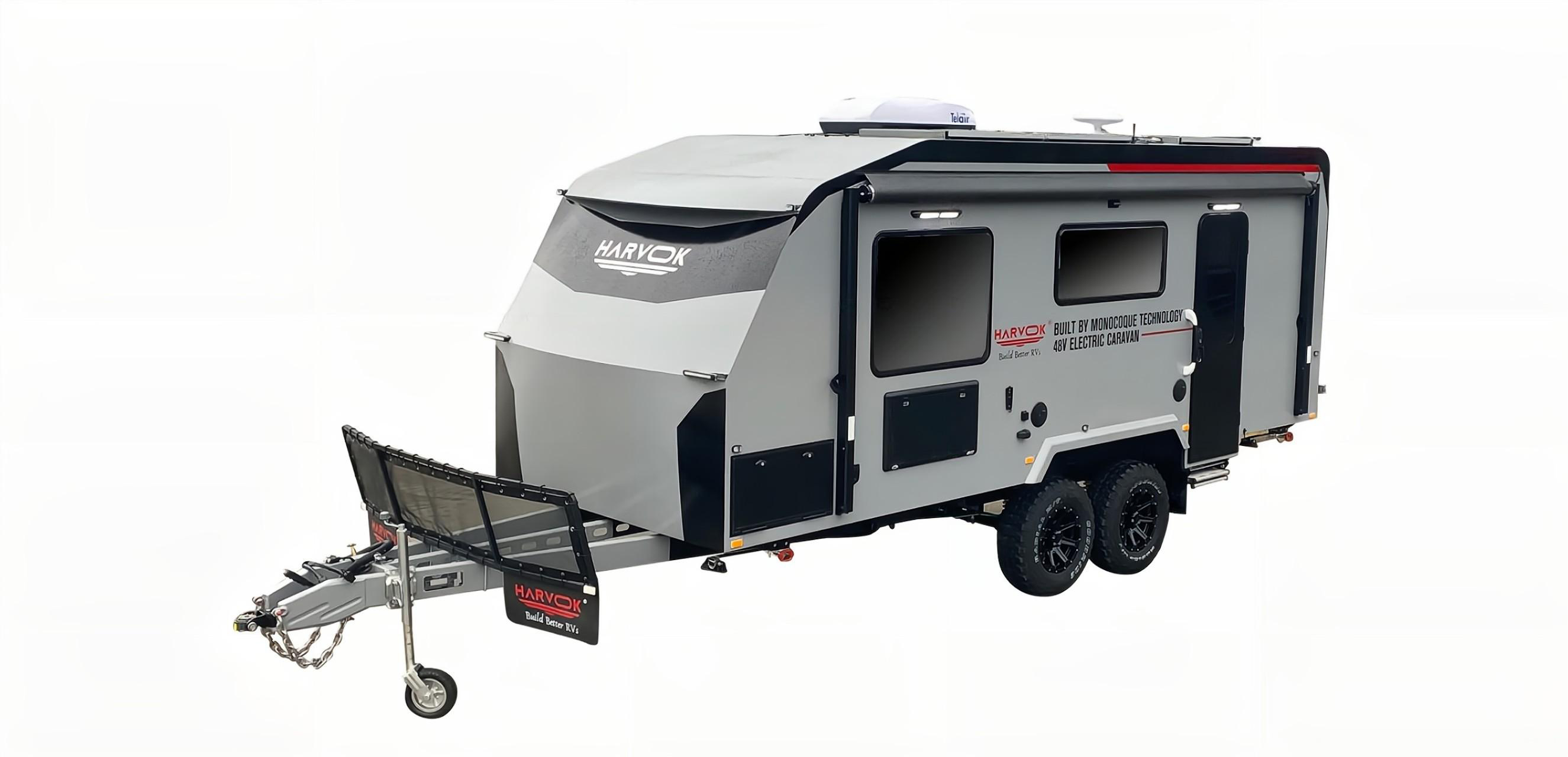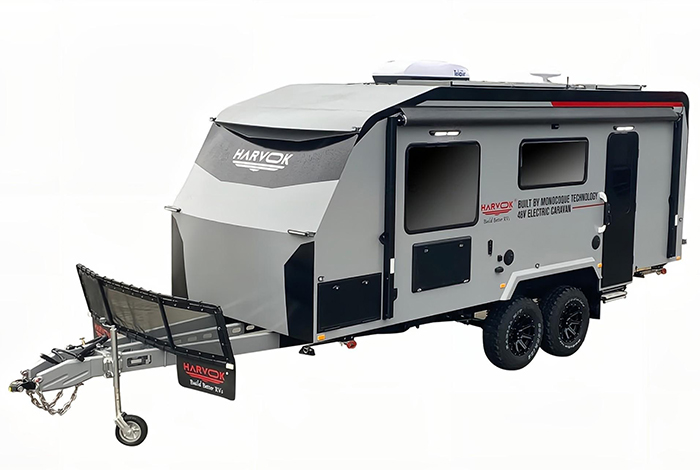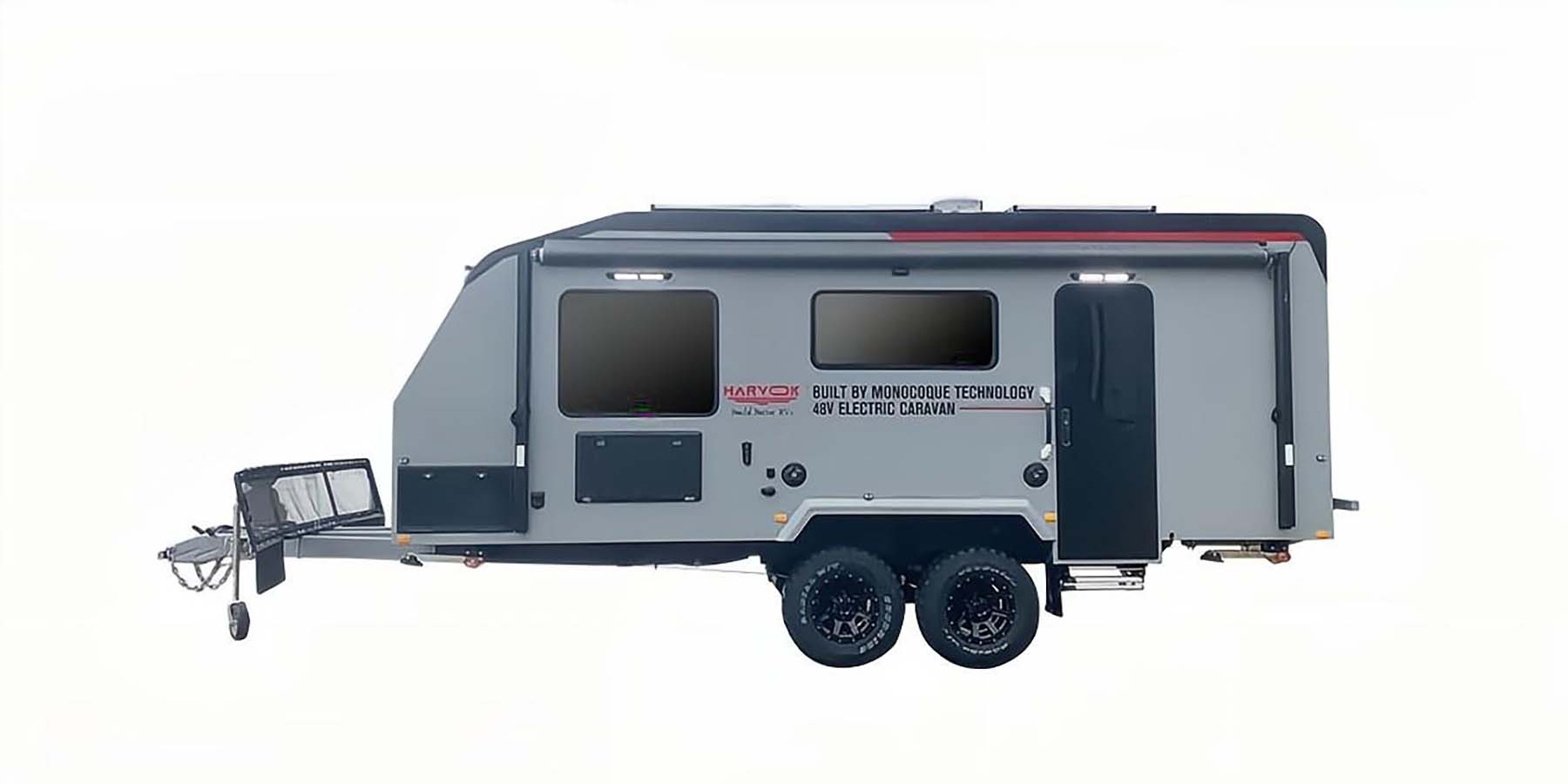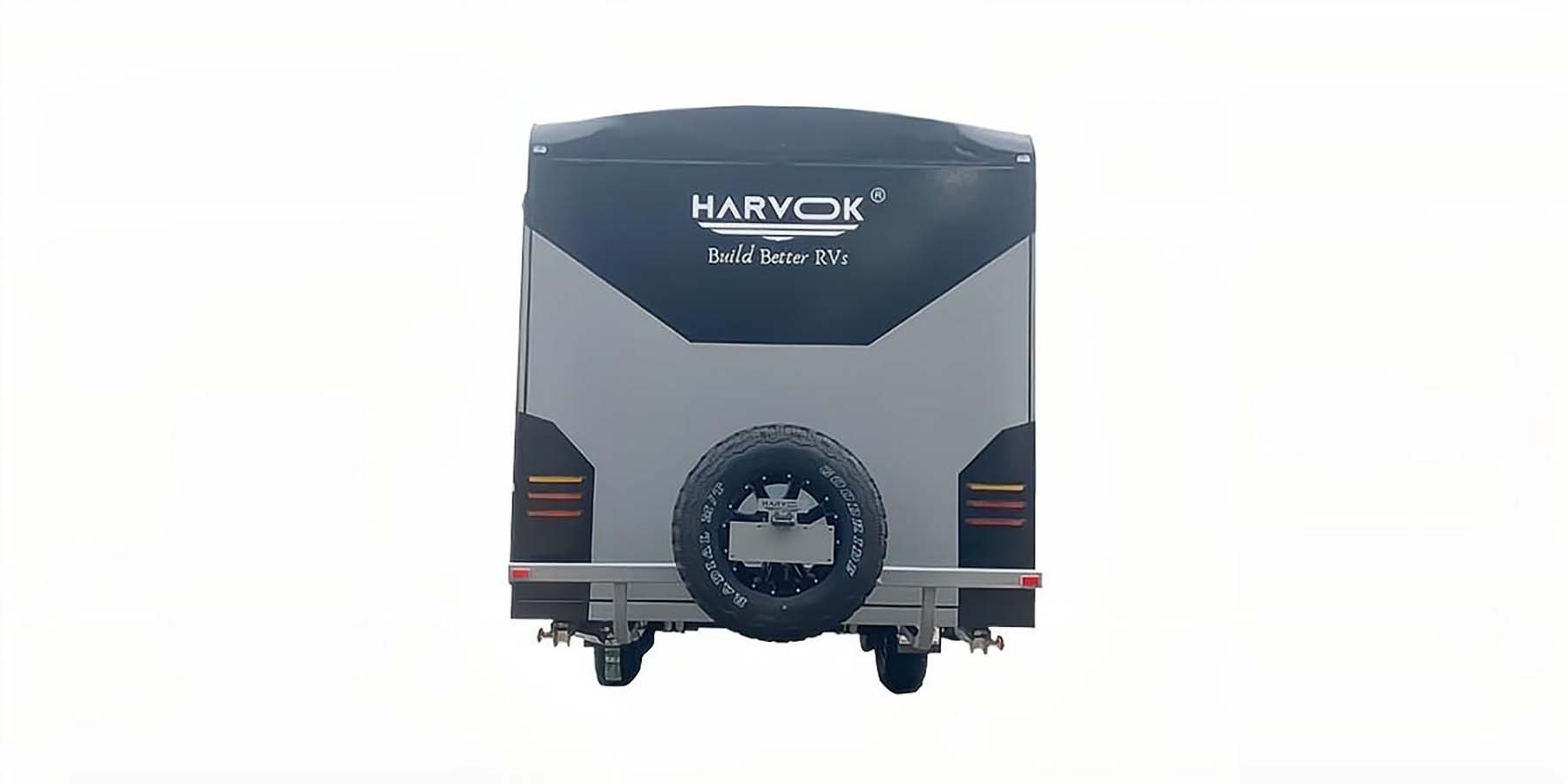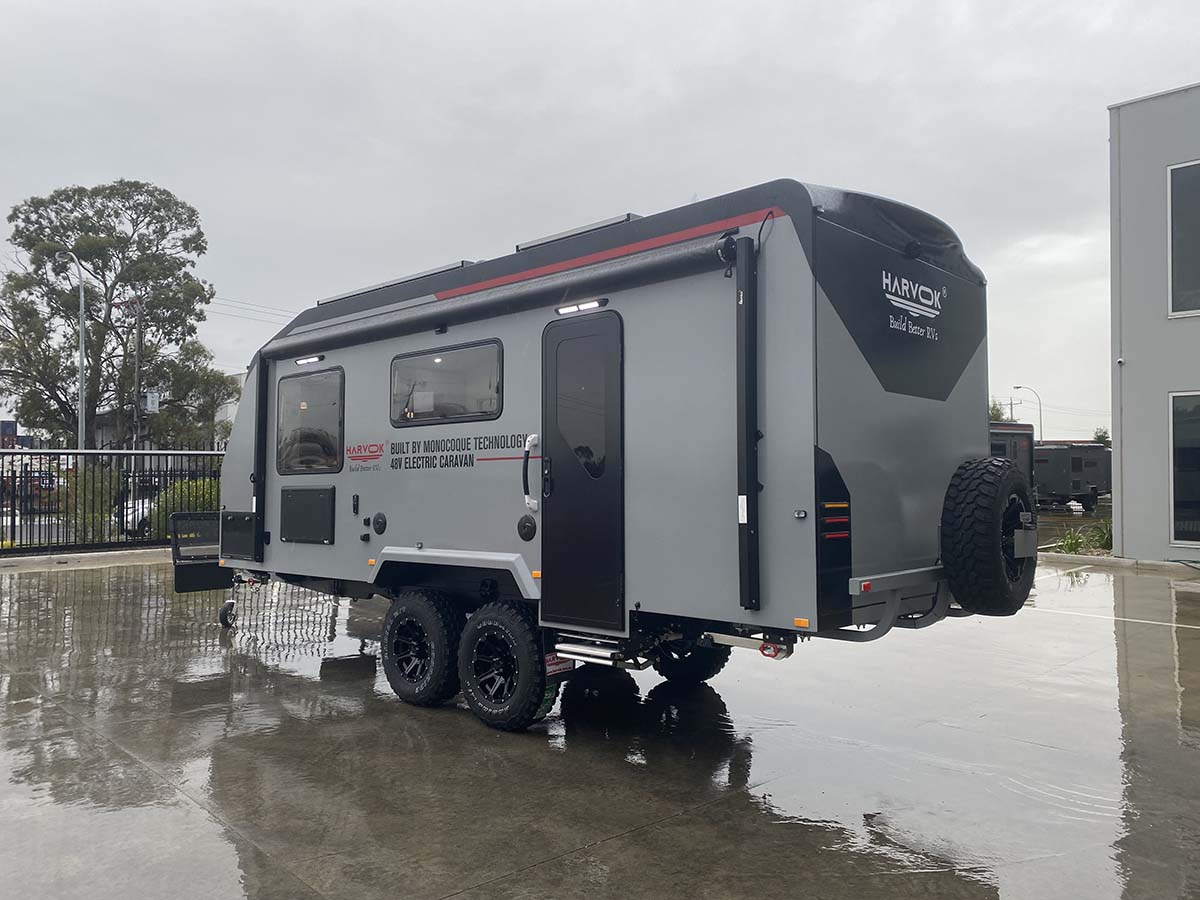Being a full electric caravan, it eliminates gas appliances from the caravan. It makes the camping greener, safer and more sustainable.
Equipped with our patented 48V power system, the caravan offers a standard 10 kWh battery capacity, upgradable to 15 kWh, similar to the Tesla Wall. This onboard power system empowers travellers to engage in free camping without relying on the power grid, all while enjoying the comforts of home, including the use of kettles, coffee machines, air conditioning, and induction cooktops. With 1000W of solar panels on the roof to harvest as much solar energy as possible.
Our design innovation extends beyond improving the user experience. It addresses the environmental impact of conventional caravan manufacturing practices. Meranti timber, a commonly used material in caravan construction, relies on unsustainable and illegal logging practices in Southeast Asia, threatening valuable biodiversity.
By eliminating thousands of staples, litres of glue, 50 tubes of silicon average per caravan our monocoque caravan offers a superior product while significantly reducing the environmental footprint.
As climate change intensifies weather patterns, heavy rains pose a significant challenge for traditional caravans with multiple joints and weak points. In contrast, our monocoque caravan significantly reduces the entry points for water ingress, minimizing the risk of rot and mould. Customers can have peace of mind knowing that their caravan is built to withstand even the harshest weather conditions.
Water will always find the weakest spot of a screwed, glued and silicone made caravan with many joints. Our customers can be rest assured as our monocoque caravan will only have entry points for water ingress from the air conditioner and hatches on the roof or windows on the side which is a miniscule amount compared to a conventional built caravan.

